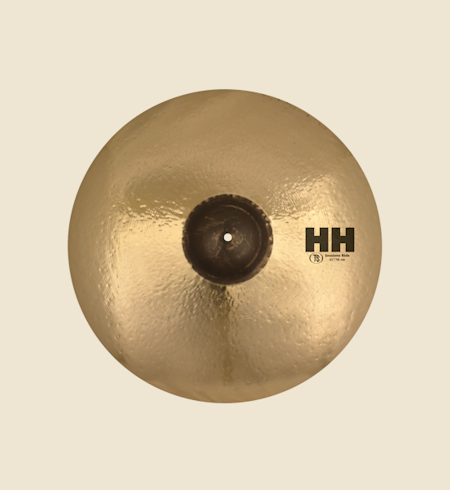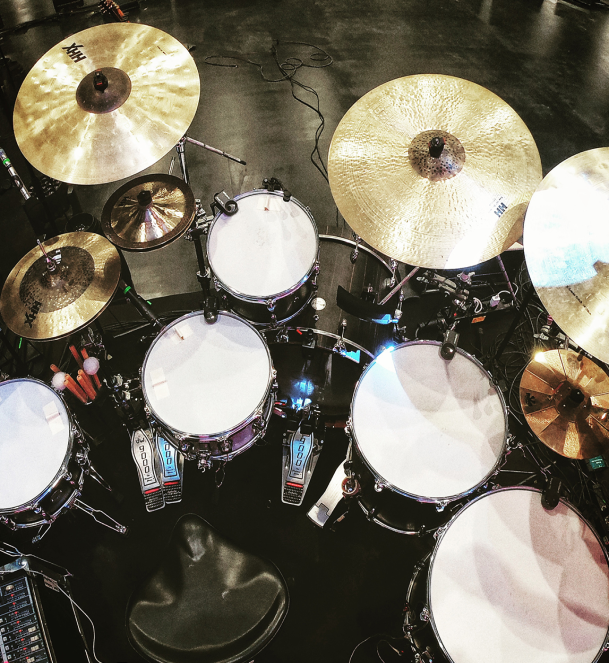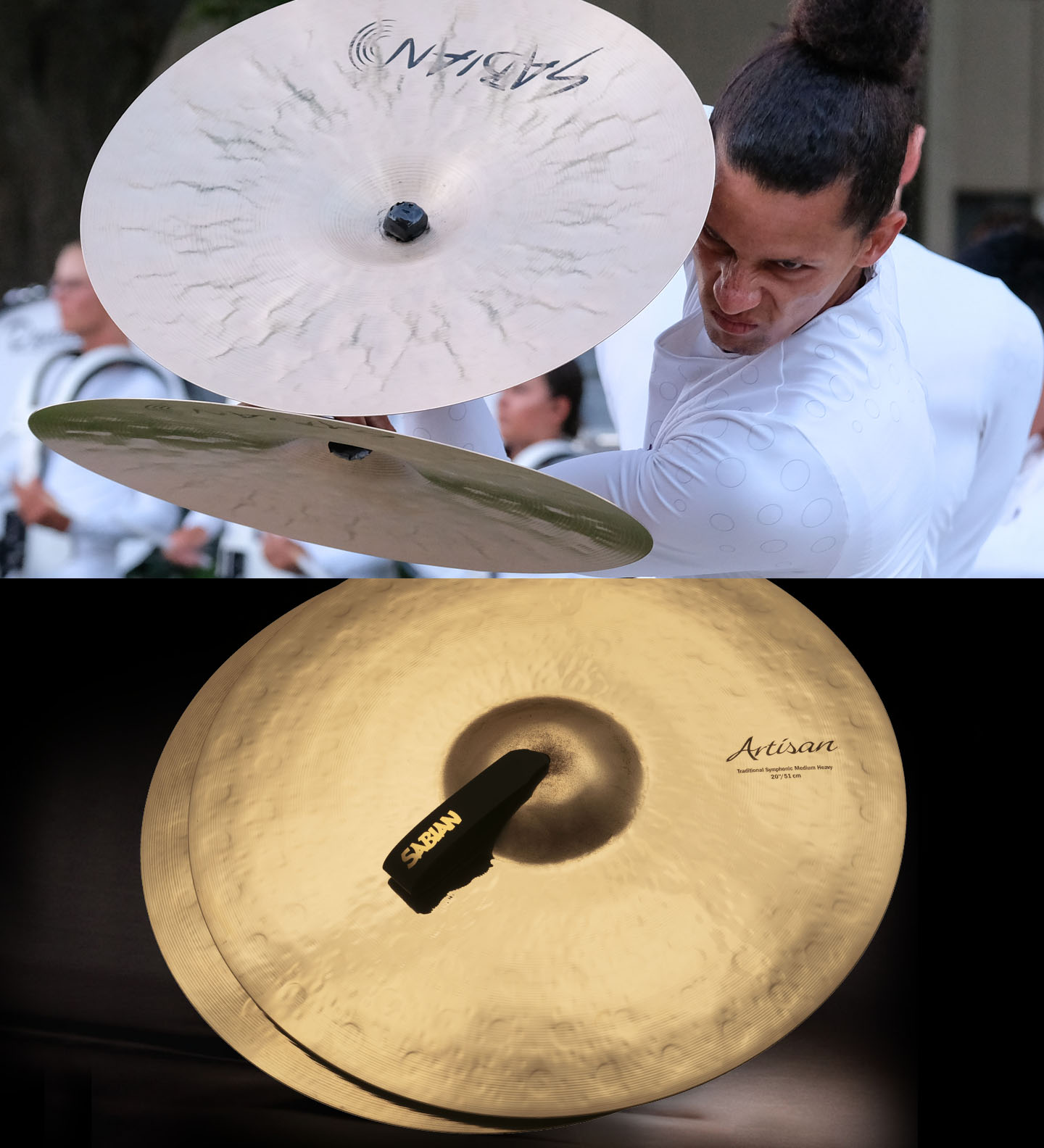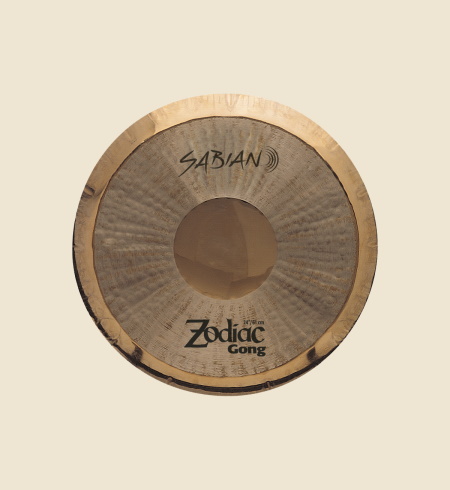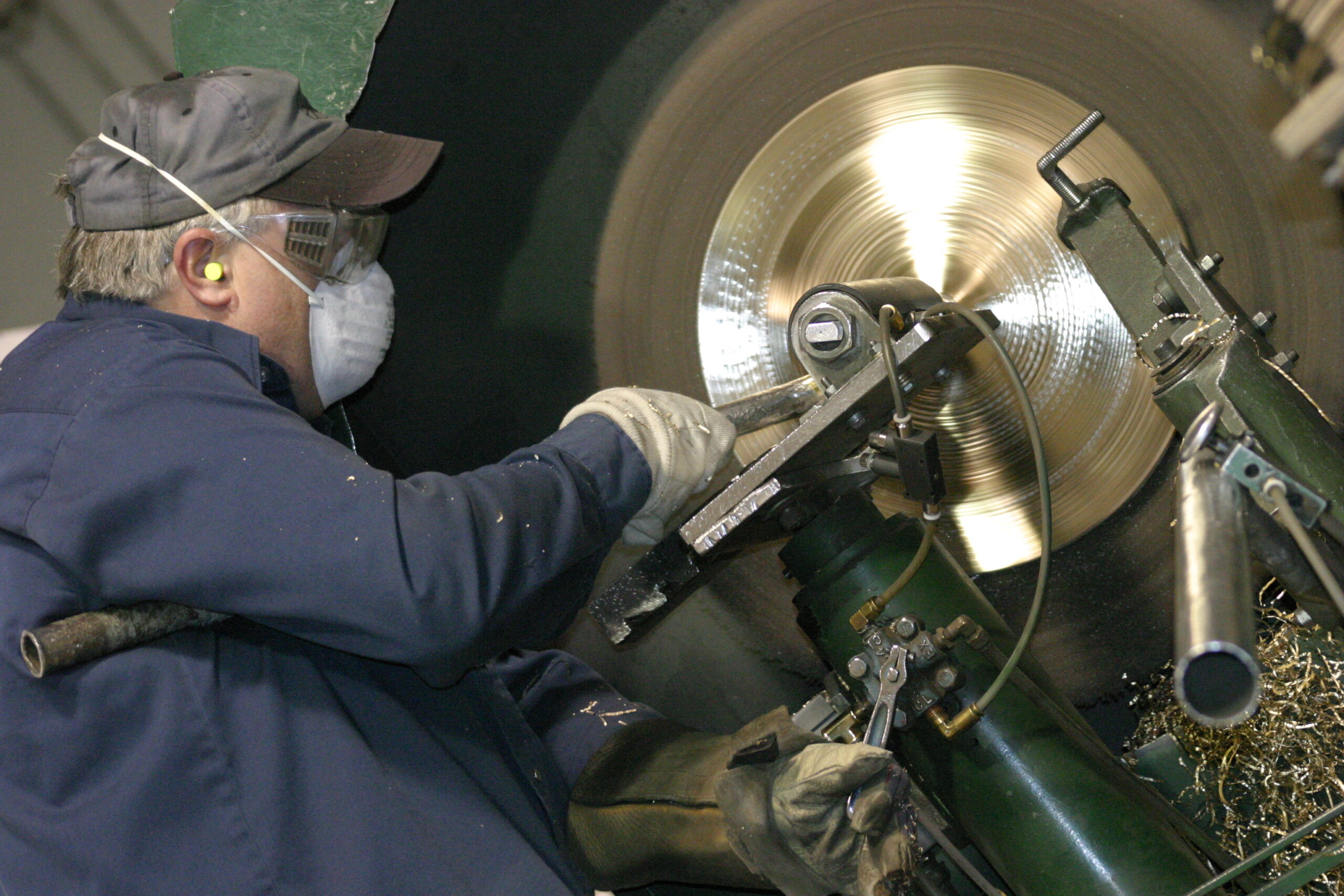As SABIAN products evolve from metal castings, to blanks, and finally to cymbals through the factory production process, they eventually reach a critical stage called lathing. This technique involves shaving small amounts of metal from the surface of the cymbal, allowing for precise control over its sound and tone. By removing material from specific surface areas, the lathing process can alter each cymbal’s pitch, sustain, and overall character.
This step serves two important purposes: Firstly, it thins the cymbal down to its desired thickness, which is crucial for achieving the proper dimensions and sound. Secondly, lathing cuts tonal grooves into the surface, allowing the cymbal to flex and breathe while helping to both move vibrations around the metal and project the overall sound.
“We normally lathe the bottom side first, and that reduces the tension,” said Randy Ross, SABIAN’s Director of Research and Development. “There’s a target weight, and we don’t want to lathe too much off of either side. There’s kind of a balance there depending on the model. There are few exceptions, some cymbals we lathe first and then hammer. But the majority, we hammer and then lathe them.”
Lathing is a fine art that requires years of practice to perfect. Cutting away the dark oxidized surface to create the perfect taper and thickness is a challenging task, as every model in every size must be treated individually to ensure accurate tapering and appropriate lathing technique, be it traditional wide blade or narrow pin lathing. The center of the cymbal is also invariably thicker than the edges, further complicating the task.
“Whatever’s there is enhanced over time,” said Ross. “Sometimes after lathing, we have to let them sit for a day or two or more because the cymbal, when it’s fully first lathed, doesn’t really sound its best. But we know if it sounds like this right now, in an hour, it’s gonna sound this much better. It changes though the first day dramatically, and then and it keeps changing forever really.
From lathing, cymbals go into an edging process for some finishing touches that allow them to reach their finished diameters.
“Everything is made a quarter inch oversized, sometimes a little more depending on the cymbal,” Ross said. “We cut that edge down to an exact diameter, because we want a nice rounded edge. We have a machine that cuts in the diameter, then we have a tool that rounds it, and then an emery cloth smooths it up. We want them thick enough that they won’t dent, that’s very important as well.”
SABIAN’s craftspeople use their expert knowledge to carefully sculpt each cymbal, ensuring that it meets their high standards of quality and musicality. Lathers must possess years of experience to create the perfect sound and shape for each cymbal, carefully cutting each one to its specified thickness and weight. In fact, two of SABIAN’s lathers have been recognized by the company for successfully lathing over 1 million cymbals each. This is a testament to the dedication and expertise required to master the art of lathing, without which, SABIAN would not be able to produce the wide range of unique and expressive cymbals that are essential to drummers all around the world.

